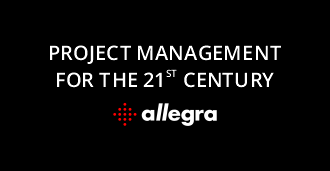How to conduct successful meetings: Meeting protocols
Overview
Meeting protocols are ways to determine priority of meeting procedures. Some of the tips shared can help to achieve successful and productive meetings.
Meeting protocols may also be referred to as/ include business meeting etiquette. Measures of etiquette can be considered important because we are all busy and all have a lot to get done. Working closely with the same group of people in a short span of time requires a balance in participation combined with common courtesy so that people are comfortable and content and can focus on the work at hand. The meeting protocol can essentially be understood as a template workflow.
- Be on time.
- Make introductions.
- Have a strong agenda.
- Sit appropriately.
- Speak up.
- Understand the unwritten speaking rules.
- Do not have your phone out.
- Timing.
- Notice.
- Members.
- Agenda.
- Motions.
- Chair.
- Procedure.
Each organisation will have its own set of procedures.
These are in place to:
- Enable the business prepare its board members fully for the meeting
- Help board members use their time as wisely as possible during the meeting
- Allow board members to pass motions that affect the future of the company
When a team is able to follow etiquette for a business meeting, it establishes respect among meeting participants, which helps the meeting begin and end on time. This may also foster an atmosphere of cooperation. A lack of etiquette and poor planning are two of the main reasons why many business meetings are not as successful as they could be. That is why it’s important to teach your employees business meeting etiquette which will help ensure that your business’s meetings are effective.
A business meeting is a gathering of minds to achieve goals for a company. As a business owner that employs people or meets with various business contacts on a regular basis, you’ll need to learn how to conduct a business meeting professionally and efficiently.
Meeting Protocols: Introduce the participants
It is always a good idea to make introductions at the beginning of a meeting. Though the attendees may know each other, it emphasizes the purpose of the meeting to state the business perspective that every participant can contribute.
Stating the meeting Agenda
In addition to who is in the room, meeting attendees want to know what will be discussed, why it is important and how long it is going to take. An agenda answers these questions. A printed agenda allows meeting attendees to follow the flow of the meeting and make notes where needed. The agenda also serves as a guideline for the facilitator, especially if the subject matters goes astray. Posting an estimated time in front of each agenda item helps to keep the meeting flowing and to end it on time.
Time keeping
Make sure the meeting starts at the stated time. Employees have to adjust schedules to accommodate meeting attendance. Delaying the start of a meeting can appear disrespectful to those who arrive on time. You want the meeting to begin on a positive note, so the right tone is set from the start.
Other tips may include…
- Reviewing any open items from a prior meeting before starting on the current agenda. Follow up on tasks that were assigned so that employees can report on findings.
- Asking meeting attendees to silence cellphones to minimize disruptions.
- Opening the meeting with a quick introduction thanking everyone for attending, setting any ground rules for the meeting.
Meeting Protocols: How to ensure productive meetings
Companies can save a tremendous amount of money and improve their productivity greatly by simply having fewer pointless meetings. And the best way to limit the number of pointless meetings being held is to establish a set of meeting rules that everyone must follow.
1. Hold meetings only when they’re absolutely required
Meeting Protocols: Scheduling a meeting shouldn’t be an automatic response to every question or issue. Instead, people should be expected to seriously consider if a meeting is the appropriate format.
2. Only invite people who are truly needed
A lot of times, people will send meeting invites to an entire distribution list, allow guests to forward the meeting invite to others, or simply add everyone who’s in any way involved in a project. The result: massive meetings that are difficult to keep on track, and lists of attendees who have nothing to contribute to or gain from the meeting.
3. Assign a meeting facilitator
To run effective meetings, someone needs to be facilitating. The facilitator’s role is to ensure that the meeting starts and ends on time, covers and sticks to the agenda, and follows all established meeting rules.
Meeting Protocols: The key responsibility of the meeting facilitator is to create an environment where attendees can work together to reach an effective solution or conclusion within the designated time.
4. Set up meeting equipment in advance
If you’re hosting your meeting in a conference room, head over to that conference room before your meeting begins to get set up and make sure you have everything you need.
5. Share a meeting agenda in advance
Sharing an agenda for your meeting well before the meeting takes place helps attendees see what’s going to be expected of them during the meeting. This helps them gather any information they may need in order to participate in the meeting productively. Pass out your written agenda at the beginning of the meeting. The agenda should contain a detailed listing of each point you plan to address at the gathering as well as a clear-cut start and end time. Make sure you list the time allotted to each point on the agenda.
6. Take and share meeting notes
The best team meetings result in a clear, shared understanding of what’s needed next, including actionable, assigned tasks.
When taking notes in meetings, notetakers should focus on:
- Facts
- Issues
- Decisions
- Action Plans
- Questions and Answers
7. Give everyone the opportunity to participate
Not everyone is comfortable fighting for the floor, but most will happily speak up if you offer them the opportunity. And if you’ve shared the meeting agenda in advance and asked attendees to prepare, there’s also less of a risk that you’re putting them on the spot.
8. Limit discussion times for each agenda item
Meetings should be no longer than an hour, as this is the average length of time most people can concentrate for. To this end, it’s important that your meeting finishes on time.
If you found these resources helpful, you can research more information about similar topics at our Allegra team blog page.




